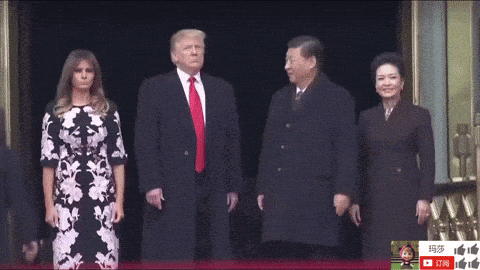- Suit and Times
- Posts
- ⚖️ Trump’s Ukraine Ultimatum
⚖️ Trump’s Ukraine Ultimatum
Musk’s chaotic emails, Trump’s deal with Ukraine, and night of Hockey for the ages
US News
Musk’s Email Mayhem 📧
A bureaucratic brouhaha unfolds as conflicting orders leave federal workers caught between compliance and caution

It started with a bold email from Elon Musk—yes, that same Trump advisor heading the so-called Department of Government Efficiency (DOGE)—urging millions of federal employees to list their weekly accomplishments in five bullet points before Monday midnight. The directive, distributed via the Office of Personnel Management, quickly ignited a firestorm across multiple government agencies.
While some department heads called for immediate compliance, others, like FBI Director Kash Patel, advised staff to “pause any responses.” Patel’s email clarified that the FBI would review all submissions in line with established procedures, creating uncertainty among workers about whether non-response might be taken as resignation—a claim Musk had boldly asserted on his social platform X.
The State Department also issued guidance, stressing that no employee is obligated to report achievements outside their departmental chain of command. Meanwhile, agencies such as the Department of Defense, the National Security Agency, the Internal Revenue Service, and the National Oceanic and Atmospheric Administration urged staff to await further instructions. A senior Department of Justice official noted that media reports confirmed the email’s legitimacy while cautioning employees against including any classified or sensitive details.
The American Federation of Government Employees slammed the message as “cruel and disrespectful,” vowing to challenge any potential unlawful terminations resulting from non-compliance.
This internal tug-of-war unfolded as President Trump, on social media, lauded Musk’s efforts, while Republican members of Congress offered mixed reactions. Congressman Mike Lawler championed the email as a “comprehensive, forensic audit” of federal efficiency, whereas Senator John Curtis urged that a dose of compassion be applied to real people with real lives at stake.
As federal agencies scramble for clarity, the contrasting directives underscore a growing rift between disruptive innovation and entrenched bureaucratic protocols. With millions of federal workers caught in the crossfire, the battle over government efficiency and accountability intensifies.
From The Hill:
World News
Trump’s Ukraine Ultimatum, Economic Extortion or Strategic Leverage? 🇺🇦
A high-stakes offer with punitive economic terms forces Ukraine into a corner

In a series of tense negotiations in Kyiv, Ukrainian officials are locked in discussions with a Trump administration whose latest economic proposal appears less like aid and more like extortion. Speaking on February 23rd—just after a night of crippling Russian drone attacks—President Volodymyr Zelensky dismissed the “unfair” terms pushed by Team Trump. The proposal demands Ukraine sign over 50% of future state profits from its mining, ports, and other industries to a U.S.-owned investment fund, a vehicle intended to recoup a staggering $500 billion in aid that, in reality, far exceeds the support already provided.
Key points of contention include:
Three conflicting proposals have emerged since February 12th—a “bad” deal, a “better” deal, and now a “disastrous” version engineered by a rotating cast of American negotiators, including figures from Treasury and Commerce.
The latest terms, drafted by Commerce Secretary Howard Lutnick, strip away any promise of military support. Ukrainian officials warn that accepting these terms would amount to selling off the country’s sovereignty.
Implicit threats hang in the balance: should Ukraine refuse, there are fears that the Trump administration may cut off critical support, including access to Starlink communications, or fast-track peace talks with Russia.
Zelensky has made his stance unequivocal: “I defend Ukraine; I can’t sell our country.” With negotiations mired in confusion and conflicting signals from Washington, Ukrainian leaders remain determined to secure a deal that includes robust military backing—not just a transaction of economic grief. As the talks continue, the world watches closely, aware that the outcome could redefine not only Ukraine’s future but also the broader balance of power on the global stage.
Around the World:
Tech
Minion Gore Videos, AI's Sinister Side Show 👾
Disturbing digital art or a dangerous new trend? AI-generated minion gore videos are flooding Instagram, TikTok, and YouTube

It might sound like something out of a twisted cartoon, but a new wave of AI-generated videos is turning heads for all the wrong reasons. These clips mash up the playful, familiar image of minions with shockingly violent, gory scenes—creating content that’s as disturbing as it is bizarre.
Platforms are scrambling. The sophisticated AI behind these videos is skillfully evading traditional content filters, leaving Instagram, TikTok, and YouTube to play catch-up. While the anonymous creators behind this digital mayhem remain shrouded in mystery, experts warn that this trend could set a dangerous precedent for automated content creation online.
As tech giants double down on upgrading their moderation tools, a debate has erupted over the fine line between edgy creative expression and outright harmful material. “When technology repurposes beloved characters into instruments of horror, it’s a stark wake-up call,” noted one digital ethics expert. “Innovation must come hand in hand with responsibility.”
For now, viewers are urged to exercise caution and report any unsettling content they encounter. In an era where AI blurs the boundaries of creativity and nightmare fuel, the battle for a safe digital space is only just beginning.
What’s New:
Economy
Xi’s Trade Vision vs. Trump’s Chaotic Tariffs ⚖️
As global trade teeters, a former Treasury official warns that China’s industrial strategy poses an even greater threat than Trump’s erratic tariff policy

Assessing today’s economic battleground, former Treasury official Brad Setser argues that China’s lopsided trade flows and President Xi Jinping’s laser focus on manufacturing may be the gravest threat to the global economy. According to Setser, Trump’s aggressive tariff stance, though disruptive, is just one part of a much larger picture. His analysis suggests that while Trump’s tariffs create uncertainty for global partners—leaving businesses scrambling to adapt—China’s strategic policies are reshaping trade dynamics on a massive scale.
Setser points out that China’s trade data reveals a radical shift: while imports of manufactured goods have barely budged over the last six years, its exports have surged by more than $150 billion. “When it comes to manufactured goods, trade with China is virtually a one-way street,” he warns. This imbalance not only undermines export-reliant economies like Germany and Japan but also gives Beijing a formidable advantage, enabling it to satisfy two-thirds of the world’s car demand and dominate key industries such as steel, aluminum, and shipbuilding.
Meanwhile, Trump’s capricious tariff threats—from steel and aluminum to autos and chips—only add to the global economic jitters. Setser contends that these one-off duties and unpredictable retaliations could backfire, intensifying market volatility rather than rebalancing trade.
As Beijing’s industrial policies steadily erode the need for foreign inputs, experts fear that the world may soon be at the mercy of Xi’s calculated trade maneuvers—while the chaos of Trump’s tariffs further clouds the economic horizon. In this tug-of-war between disruptive innovation and erratic protectionism, the global economy braces for a rough ride.
From The Street:
Entertainment
Diddy’s Defense Lawyer Exits Amid Turbulent Sex-Trafficking Case 🎤
A high-profile legal shakeup adds fuel to a case already mired in controversy

In a dramatic twist in the criminal sex-trafficking case against music mogul Sean “Diddy” Combs, defense attorney Anthony Ricco has filed a motion to withdraw from the case. In a stark federal court affidavit in Manhattan, Ricco stated, “Under no circumstances can I continue to effectively serve as counsel for Sean Combs.” His decision comes amid growing concerns and internal disagreements within Combs’ legal team.
Ricco, one of six attorneys representing the 54-year-old producer, did not offer further details—citing attorney-client privilege—after conferring with lead counsel Marc Agnifilo. Although his request to step down is pending judicial approval, Ricco assured the court that his exit would not delay the trial, which is slated to begin on May 5, 2025. Combs will continue to be represented by five other attorneys.
The case, which has drawn intense media scrutiny, centers on charges that Combs forced women into drugged sex shows. Despite pleading not guilty, the producer has been held without bail since his arrest in September. If convicted on the most serious charges, he faces a mandatory minimum of 15 years in prison, with the possibility of a life sentence.
Ricco’s sudden departure intensifies the already volatile legal atmosphere surrounding the case. With more than 40 civil lawsuits alleging sexual assault and abuse, the internal discord among Combs’ defense team only deepens public concern. As the trial date nears, questions remain over how these legal upheavals will impact the outcome of one of the entertainment industry’s most high-stakes and closely watched cases.
Around the Water Cooler:
Be the first to know about all things NY Knicks
Our Locked On Knicks newsletter keeps you updated.
Hear insider analysis from our expert podcast hosts.
Get free access to game day insights.
Sports
Record-Breaking Rivalry, 4 Nations Final Shatters Ratings 🏒
Canada edges the U.S. in an overtime thriller that set new viewership records

In a monumental display of international hockey, the 4 Nations Face-Off championship game at Boston’s TD Garden delivered an unforgettable finish. In a hard-fought 3-2 overtime victory, Canada clinched the title when Edmonton Oilers star Connor McDavid scored the decisive goal 8:18 into overtime. American netminder Jordan Binnington put on a stellar performance, facing 33 shots and limiting the U.S. to just two goals, but it wasn’t enough to overcome Canada’s relentless pressure.
Record-Setting Viewership:
📺 The game attracted a staggering 9.3 million viewers, peaking at 10.4 million—making it the largest audience ever for a hockey game on ESPN.
📊 It also became the most-watched non-NFL event on ESPN+, signaling a major shift in how international hockey is capturing fan attention.
Across Canada, passion for the sport was palpable, with Sportsnet reporting that 10.7 million Canadians tuned in—over a quarter of the nation’s population. This landmark viewership makes the final ESPN’s biggest broadcast since the 2024 NBA Finals.
The 4 Nations tournament, an inaugural best-on-best showdown, averaged 4.3 million viewers per game. Yet, the final clearly stole the spotlight, setting a new benchmark in hockey viewership and reinforcing the sport’s growing global appeal. As fans from both sides of the border celebrate a game defined by heart-stopping moments and record-breaking numbers, this championship has firmly established itself as one of the most thrilling spectacles in international sports history.
Around the Country:

